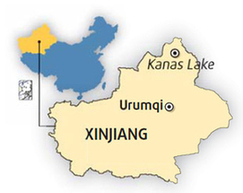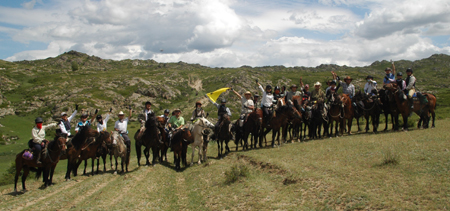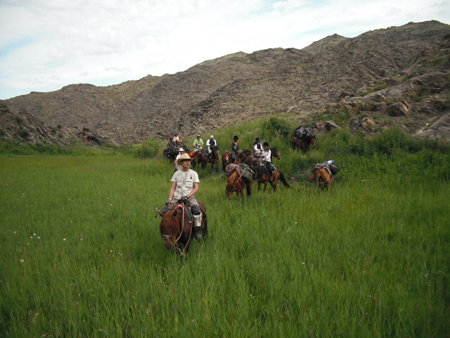
At the tip of China's westernmost region of Xinjiang lies the Kanas nature reserve, near the point where the national border meets Kazakhstan, Mongolia and Russia. Known for its breathtaking vistas of grassland, snow-capped mountains and one of the country's deepest alpine lakes, Kanas has also been called "god's backyard". But saddle up and sit in, because the best of Kanas is seen on horseback. For four full days, I was part of a group of 23 lucky riders from home and abroad who experienced heavenly Xinjiang. This is how we did it.
Getting there
We first met at the Maitian International Youth Hostel in Urumqi, capital of the Xinjiang Uygur autonomous region. The hostel is a well-known pit stop for foreign and local travelers off the beaten track.
It was a fitting starting-off point for our group, made up of residents from nine cities ranging from Beijing to Singapore.
It became clear from the cowboy hats, boots, whips and other riding paraphernalia being loaded onto our minibus that these were true aficionados of horseback riding in the wild.
Introducing ourselves with monikers like Rainbow and Soaring Eagle, our group of city slickers slowly began to shed the urban pretensions of the real world as we headed for the natural refuge of northern Xinjiang.
After a half-day's journey on Highway 216, we made a brief stop at the region's research institute for the breeding of wild horses. More than 100 of the endangered Przewalski's horses have been successfully bred at the 2,000-hectare site in the past two decades. From the ability to sleep standing to superior body coordination, these creatures at the institute became an ideal reminder of their domesticated cousins we would come to rely on in the next few days.
We arrived just before 10 pm, when the sky was turning twilight, to Burqin under the Ili Kazak autonomous prefecture. This town was our last real look at civilization and modern amenities, as we prepared to enter the region's expansive steppes and rolling mountain ranges.
|

Sharing the high of horseback riding in the Kanas highlands. [Courtesy of Wutzala]
|
Saddling up
We picked our steeds first thing in the morning at Chonghu'er village, situated on the northwestern edge of the Altay mountains that the Turkic people claim as their ancestral land.
Unlike their feisty Mongolian cousins, the Ili Kazak horses here are famed for their pleasant personality and acquiescence. Their relatively small stature - up to 1.48 m high - also belies a legendary stamina - horse trainer Wushiliu said his beasts are the best this side of Central Asia.
"My horses can run eight hours a day and keep that up for two weeks," he said.
"They've been sought after by armies, explorers and traders since time immemorial."
Leaving aside these incredible claims to verify later, group members looked out instead for comfortable saddles and responsive reins as accompanying guides strapped our baggage, food and other camping provisions for the next few days onto packhorses.
No amount of anticipation could have prepared us for what we felt as we rode into the highlands - deep within lush mountain valleys, where condors soared up against a blue sky, our horses walked along accompanied by a soothing breeze that brushed the top of verdant slopes.
This was Butterfly Valley.
|
 Riding through Butterfly Valley [Courtesy of Alexander Hooi]
Riding through Butterfly Valley [Courtesy of Alexander Hooi]
|
Some of us let out yells to test the echoes against the mountains, the first of many outbursts from spirits let free.
At about noon, we came across prehistoric paintings of long-antlered animals left on a hillside. The ancient art told of a forgotten time in a place where abundant prey was part of nature's generous bounty.
Our pack followed the sun's steady rise to one of the area's peaks of more than 1,500 m, where we could see the snow-capped ranges of the north toward Russia and Mongolia. Some members were unable to resist a nap amid the lull of a boulder's shade, while others bought rock-hard cheese from the nearby Kazak herder to supplement lunch.
Dinner was a much grander affair, which we enjoyed on the banks of a roaring river near Ka'ermu Bridge. Boiled mutton shank washed down with a precious stock of beer re-fueled us for the day ahead, as our horses were brought to graze on the sides of the valley to similarly load up for the next day's trek up the highlands.
|
Dinner at Ka'ermu Bridge [
Courtesy of Wutzala]
|

